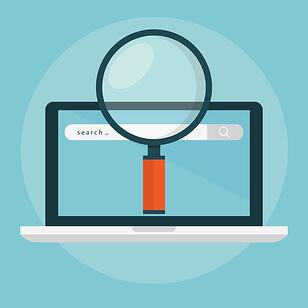6 Important Things to Look for When Choosing EHR Software
Shopping for an EHR system can be overwhelming. There are several options on the market, all boasting the best features. Before you go into viewing software demos of each system, you should assess your own practice to make notes of workflow inefficiencies and the needs of your staff so you have a good idea of what the unique needs are for your practice.
In our latest doctor-to-doctor video, Dr. Kim Castleberry reviewed a list of 10 features that are important to him when it comes to EHR software. We're highlighting 6 of the features in this article, but if you want a deeper dive into all 10, you can check out the video here.
6 Things ODs Should Look for in Their Next EHR Software
Fewer Clicks
Getting used to a new system is hard enough as it is. That's why you need a system that will make your life and workflow easier with fewer clicks to get through a patient exam. With Uprise, it's easy to view patient info for exam type, reason for visit, orders, active problems, and refractions before you head into the exam. Plus, electronic patient questionnaires can also be completed online, saving you and your front desk staff lots of time.
Attractive User Interface
Let's face it. You spend hours each day in front of your computer on your EHR software. Anything you have to look at that much each day should be pretty. Exam formats should respect your workflow, and the UI of the system should be uncluttered and easy for you to get to the information you need. Everyone has their own preferences, so make sure that you're comfortable and happy with the design of the system you select.
OD Designed
Having ODs involved in the design process of your software ensures that the workflow is intuitive to the way an OD works, and makes training on the system simple because it works the way you think it would. You'll also get multiple user access to the exam at the same time so you and your staff can easily work together all the way through refraction and product ordering.
One Touch Clinical Desion Support
Originally, clinical decision support was designed to meet government regulations, and not really for clinical benefit. You should have a system that is preloaded with clinical decision support that allows problem selection with severity and provides automated orders and plans. Having quick and easy access to images and treatment allows you to share information with patients at the point of care.
Cloud-based
Legacy EHR systems don't offer as much flexibility as modern, cloud-based solutions. With a modern cloud system you can access your data on any browser, any device, at any time with an Internet connection. Some systems that aren't 100% in the cloud need to be run from specific devices, special software, or require VPN connections.
Hands-free MIPS
Government compliance has always been a pain-point for many clinicians. And, with the start of MIPS this year, it's one more program to be compliant with. Having a system that tracks MIPS compliance in the background will save you time so that when you're ready to attest, all you need to do is pull the right reports for submission.
Watch our latest 20-minute Doctor-to-Doctor video to get a deeper dive into what to look for in your next EHR system.

